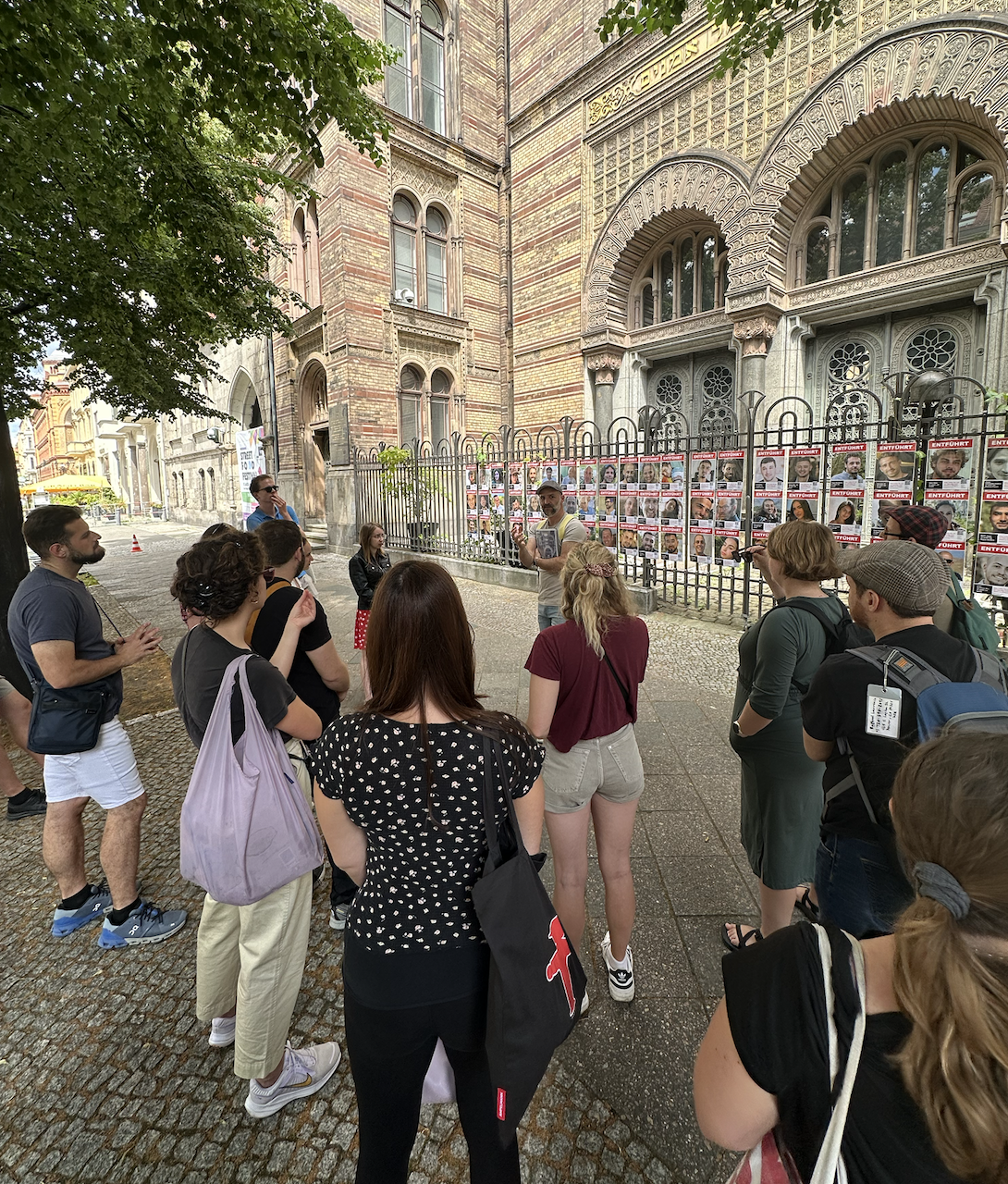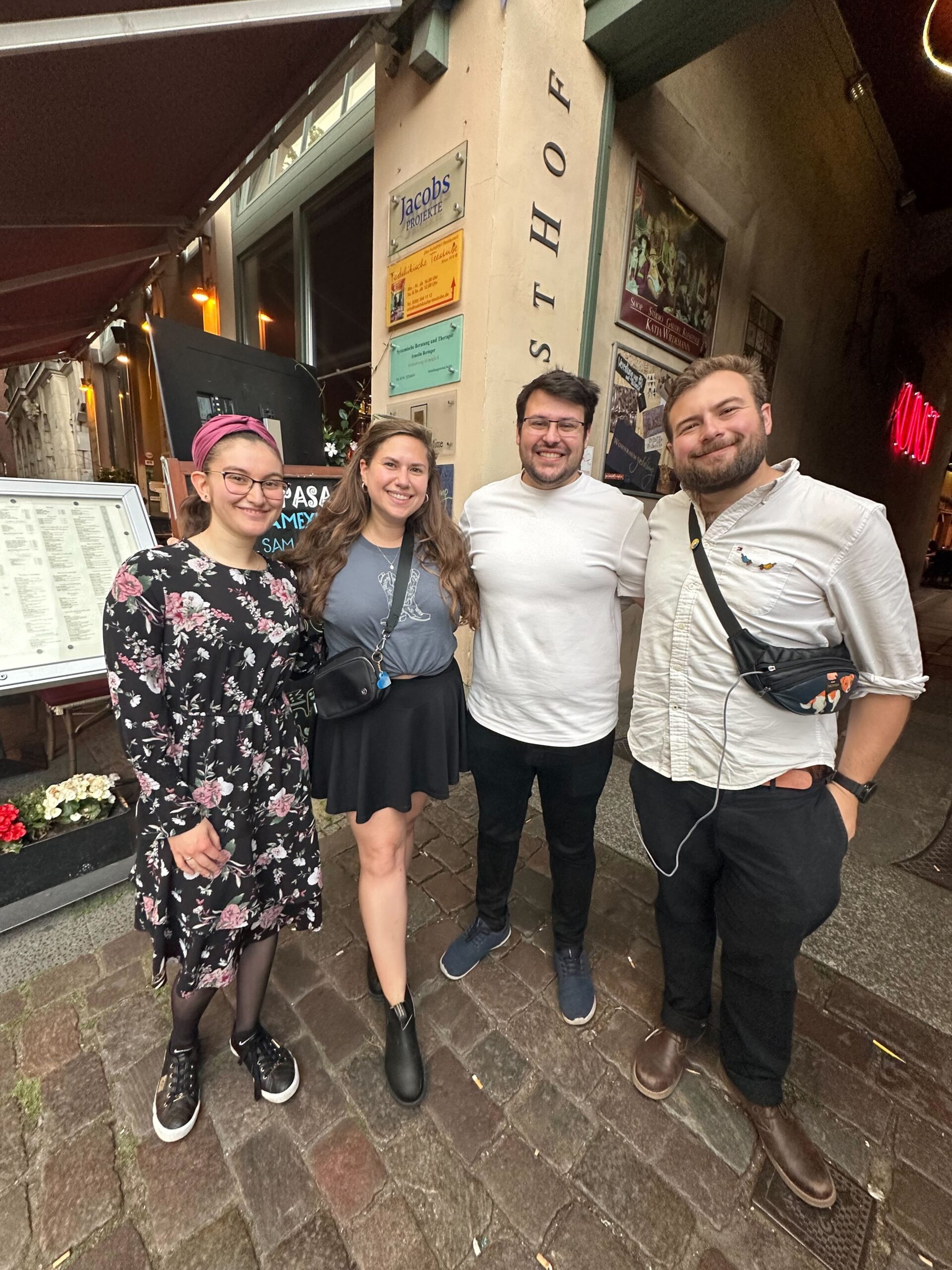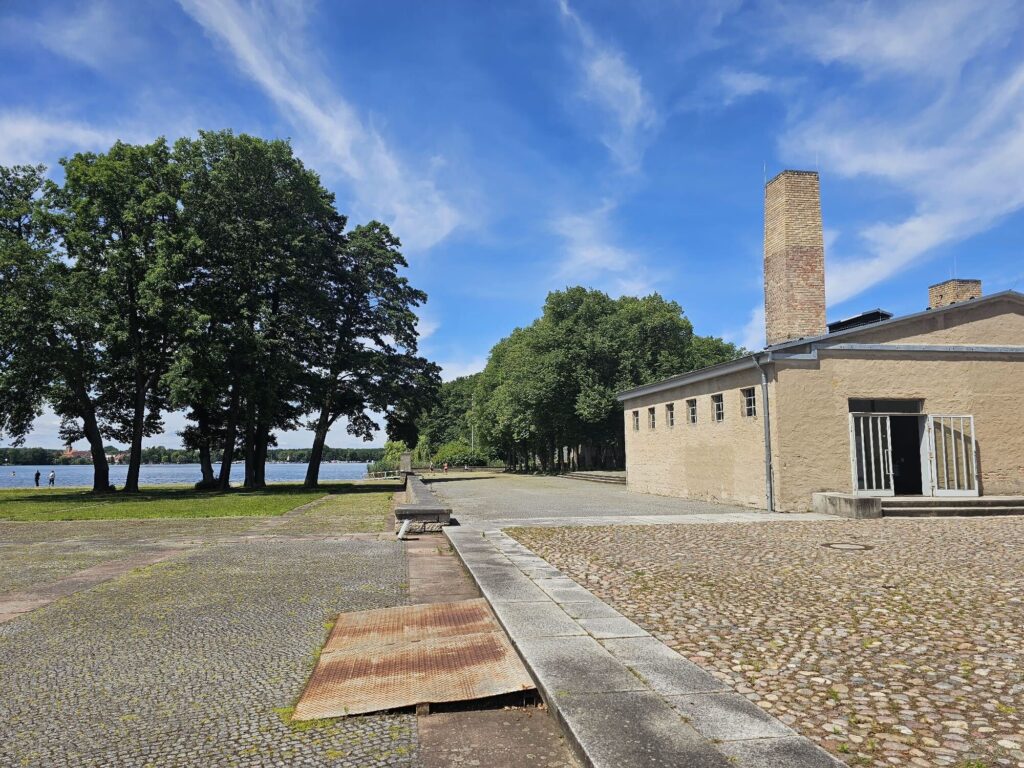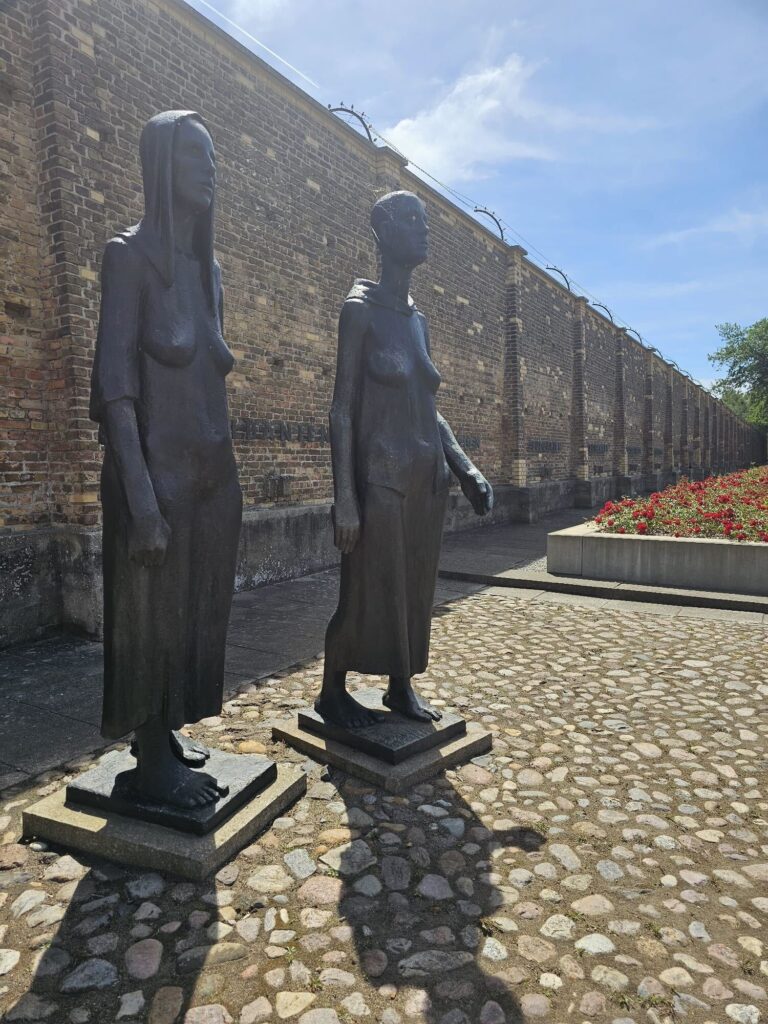
Geshmak to be a Yid – Jewish Germany in 2024
In German and Yiddish, the word “Geshmak” means delicious or tasteful. A commonality in language between two different worlds – one Jewish and one not. In June, I had the opportunity to lead 16 Moishe House community builders on a trip to Germany to get a taste of the country in a post-Holocaust world. We traveled with Germany Close Up, an organization that brings North American Jewish adults ages 21-40 to experience Germany and learn how German Jews live and how Germany combats anti-Semitism today. Community builders traveled to Berlin and Hamburg from the United States and Canada.

A trip highlight was having dinner with Moishe Pod Berlin Residents Maxim and Daniela at a local kosher restaurant. They warmly welcomed us to their city, as we noshed on hummus and falafel together. We learned about their community, the events they host, and the various organizations they are involved in. Maxim and Daniela invited us to their home that weekend to meet their community members and join them for a Shabbat game night. Many of the GCU participants went and got an exclusive glimpse into the German Jewish young adult community. It was an unexpected and wonderful experience to meet and enjoy time with other Moishe House community builders. Our time with Maxim and Daniela was a great complement to the more formal conversations we had with German politicians, members of the German foreign service, Jewish leaders, and academics about Germany and modern German Jewish life.
A major theme of the trip was wrestling with Germany’s past. One of our most difficult days of the trip was our visit to Ravensbrück Concentration Camp. The two-hour bus ride from Berlin gave us time to reflect on what we had already learned and to think about what was to come. Most of the group had not visited concentration camps and did not know what to expect. When we arrived, many group members thought about how “it’s so quiet” and “it’s a pretty property” as well as, “this is in the middle of a town, it doesn’t feel like a concentration camp”. Soon, we were about to see the true ugliness of what the camp was, and how it resulted in the murder of over 50,000 women.


Ravensbrück was a women-only camp, run by women-only guards. The camp held over 130,000 women from 1939-1945 and was primarily used as a work camp. Our tour guide had been leading tours at this camp every day for 40 plus years and had become close friends with survivors of the camp and learned many stories from its surrounding neighbors. The guide took us from the front of the camp to the back of the camp, which was a night and day difference. Opinions about the look and feel of the camp quickly changed once we ventured beyond the cement wall that was once the barrier between freedom and slavery. The camp included barracks, work centers, and an on-site prison. It was grim, ruthless, unforgiveable, and unforgettable.
The 11-day trip gave everyone a new perspective on Germany and Jewish Germany, and a positive outlook on the continued strides Germany is taking toward combatting anti-Semitism. Participants shared that they viewed Germany in a different light after the trip. Before the trip, they felt Germany would never be a place they could fathom visiting after the atrocities that Jews faced there during the Holocaust. Some still feel that Germany is holding onto a dark past, and that they don’t believe they could visit again. Others were glad to have been part of this journey and look forward to returning to Germany one day. I could go on about the various unique experiences that our group individually took away from this program, but as we are now all back in our respective homes outside of Germany, we share a common memory together of what we learned, and the importance of how we continue to never forget.